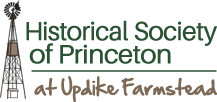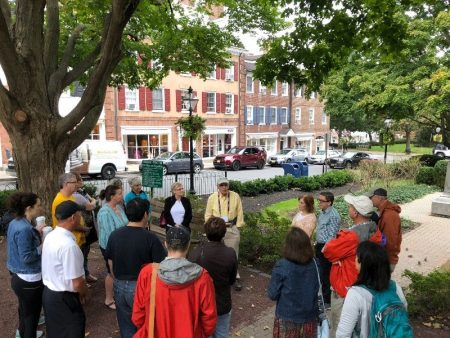Princeton, New Jersey is one of the country’s most historic communities. Settled in the late 17th century, Princeton produced three signers of the Declaration of Independence (Richard Stockton and John Witherspoon for NJ and Joseph Hewes for North Carolina) and was the site of one of the Revolutionary War’s crucial battles. It served briefly as the nation’s capital when the Continental Congress met at the College of New Jersey (Princeton University) in 1783. A center for learning and culture since the colonial period, it has been home to world-renowned scholars, scientists, writers, and statesmen. George Washington walked its streets and three other United States Presidents, James Madison, Woodrow Wilson, and Grover Cleveland, lived in Princeton. Thomas Mann, T. S. Eliot, and F. Scott Fitzgerald all wrote in Princeton. Actor Paul Robeson spent his childhood here; his father, William Drew Robeson, was pastor of the Witherspoon Street Presbyterian Church in the Witherspoon-Jackson neighborhood. World-renowned scientists Albert Einstein and Robert Oppenheimer made the town their home. Throughout its history Princeton has been a dynamic community. Each wave of immigrants to the United States, from early Irish and Germans to eastern Europeans and Italians at the turn of the century, brought an influx to Princeton. Later arrivals included World War II refugees, Hungarians, Koreans, Southeast Asians, Haitians, East Indians, and Guatemalans.
Bainbridge House (1766)
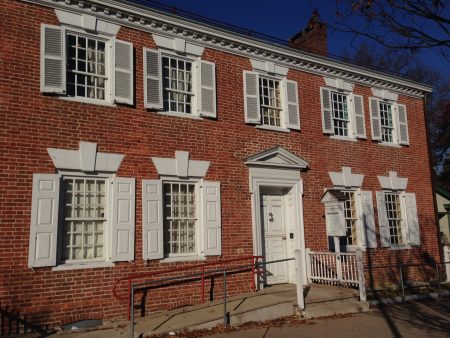 Once the headquarters of the Historical Society of Princeton, this Georgian building at 158 Nassau Street is one of the few remaining 18th-century houses in Princeton Borough. Almost all of the 1766 structure remains, including original paneled walls and staircase. Built by Job Stockton, a wealthy tanner and descendant of one of the earliest Princeton settlers, the property remained in the Stockton family for over 100 years. In 1774 it was leased to Dr. Absalom Bainbridge whose son, Commodore William Bainbridge, a hero of the War of 1812, was born in the house on May 7, 1774. The Bainbridge family, loyal to the British throughout the Revolution, fled to the more sympathetic state of New York shortly after the war arrived in Princeton. The Bainbridges were also slaveholders, and this move, as well as their disloyalty to the Continental cause, provided an opportunity — albeit a difficult and prolonged one — for an enslaved man named Prime to reach freedom. Prime became one of only three enslaved men in New Jersey to be manumitted by act of the New Jersey State Legislature. In the late 19th century Bainbridge House served as a boarding house for families and Princeton University students. In 1910 the owner, Princeton University, leased it to the Public Library, and in 1967 it became home of the Historical Society. Today, it is Art@Bainbridge, a satellite exhibition space for the Princeton University Art Museum showing works by contemporary artists.
Once the headquarters of the Historical Society of Princeton, this Georgian building at 158 Nassau Street is one of the few remaining 18th-century houses in Princeton Borough. Almost all of the 1766 structure remains, including original paneled walls and staircase. Built by Job Stockton, a wealthy tanner and descendant of one of the earliest Princeton settlers, the property remained in the Stockton family for over 100 years. In 1774 it was leased to Dr. Absalom Bainbridge whose son, Commodore William Bainbridge, a hero of the War of 1812, was born in the house on May 7, 1774. The Bainbridge family, loyal to the British throughout the Revolution, fled to the more sympathetic state of New York shortly after the war arrived in Princeton. The Bainbridges were also slaveholders, and this move, as well as their disloyalty to the Continental cause, provided an opportunity — albeit a difficult and prolonged one — for an enslaved man named Prime to reach freedom. Prime became one of only three enslaved men in New Jersey to be manumitted by act of the New Jersey State Legislature. In the late 19th century Bainbridge House served as a boarding house for families and Princeton University students. In 1910 the owner, Princeton University, leased it to the Public Library, and in 1967 it became home of the Historical Society. Today, it is Art@Bainbridge, a satellite exhibition space for the Princeton University Art Museum showing works by contemporary artists.
Nassau Hall (1756)
 When this building was completed in 1756, it was the largest academic building in the colonies, and it housed the entire College of New Jersey (now Princeton University) for nearly 50 years. Named for King William III, Prince of Orange and Nassau, it survived bombardment during the Revolutionary War, and two devastating fires in 1802 and 1855. In 1776 Nassau Hall was the first capitol of New Jersey, and in July of that same year a reading of the Declaration of Independence took place on the lawn. Nassau Hall also housed a British garrison prior to the Battle of Princeton in 1777, and it became the site of the nation’s capital when the Continental Congress met there between June and November of 1783. Today it is used for administrative offices, including the President’s office.
When this building was completed in 1756, it was the largest academic building in the colonies, and it housed the entire College of New Jersey (now Princeton University) for nearly 50 years. Named for King William III, Prince of Orange and Nassau, it survived bombardment during the Revolutionary War, and two devastating fires in 1802 and 1855. In 1776 Nassau Hall was the first capitol of New Jersey, and in July of that same year a reading of the Declaration of Independence took place on the lawn. Nassau Hall also housed a British garrison prior to the Battle of Princeton in 1777, and it became the site of the nation’s capital when the Continental Congress met there between June and November of 1783. Today it is used for administrative offices, including the President’s office.
Morven (c. 1750-1800)
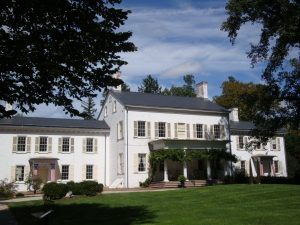 The home of Richard Stockton III, a signer of the Declaration of Independence, and his wife Annis Boudinot Stockton, a published poet, Morven (located at 55 Stockton Street) was one of Princeton’s social hubs during the 18th century. The original dwelling is believed to date from the 1750s, although recent research indicates that little of this structure remains. Much of the present building was constructed in the 1790s, with major alterations made in the 1850s by Commodore Robert F. Stockton, a United States Senator and a grandson of the original owner. In 1954 the owners, Governor and Mrs. Walter Edge, donated Morven to the State, stipulating that it be used either as a Governor’s mansion or a museum. Governors Meyner, Hughes, Cahill, and Byrne lived in Morven until 1982, when Drumthwacket became the official governor’s residence.
The home of Richard Stockton III, a signer of the Declaration of Independence, and his wife Annis Boudinot Stockton, a published poet, Morven (located at 55 Stockton Street) was one of Princeton’s social hubs during the 18th century. The original dwelling is believed to date from the 1750s, although recent research indicates that little of this structure remains. Much of the present building was constructed in the 1790s, with major alterations made in the 1850s by Commodore Robert F. Stockton, a United States Senator and a grandson of the original owner. In 1954 the owners, Governor and Mrs. Walter Edge, donated Morven to the State, stipulating that it be used either as a Governor’s mansion or a museum. Governors Meyner, Hughes, Cahill, and Byrne lived in Morven until 1982, when Drumthwacket became the official governor’s residence.
Maclean House (1756)
 Built by Robert Smith as a residence for the presidents of the College, it was used as such until the acquisition of Prospect House in 1878. The first president of the College to live here was Aaron Burr, Sr., whose son Aaron Burr, Jr. became Vice-President of the United States in 1801. Jonathan Edwards, the New England theologian, took up residence in 1758. This is a site fraught with contradictory scenes of both liberty and bondage. In 1766, it hosted a slave auction rather large for Princeton, in which six people were sold from the estate of deceased college president Samuel Finley. Only a decade later, it was occupied by George Washington on the first of two revolutionary occasions — first during the Battle of Princeton in 1777, and later when the Continental Congress met at Nassau Hall in 1783. Other visitors to the house have included Andrew Jackson, and Henry Clay. Subsequently called the Dean’s House, today it houses the Alumni Council and is named in honor of John Maclean, Jr., President of the College from 1854 to 1868 and founder of the Alumni Association.
Built by Robert Smith as a residence for the presidents of the College, it was used as such until the acquisition of Prospect House in 1878. The first president of the College to live here was Aaron Burr, Sr., whose son Aaron Burr, Jr. became Vice-President of the United States in 1801. Jonathan Edwards, the New England theologian, took up residence in 1758. This is a site fraught with contradictory scenes of both liberty and bondage. In 1766, it hosted a slave auction rather large for Princeton, in which six people were sold from the estate of deceased college president Samuel Finley. Only a decade later, it was occupied by George Washington on the first of two revolutionary occasions — first during the Battle of Princeton in 1777, and later when the Continental Congress met at Nassau Hall in 1783. Other visitors to the house have included Andrew Jackson, and Henry Clay. Subsequently called the Dean’s House, today it houses the Alumni Council and is named in honor of John Maclean, Jr., President of the College from 1854 to 1868 and founder of the Alumni Association.
 Thomas Clarke House (c. 1772)
Thomas Clarke House (c. 1772)
Built circa 1772 by Quaker Thomas Clarke, the Thomas Clarke House in Princeton Battlefield State Park was originally surrounded by a 200-acre farm. On January 3, 1777, the Battle of Princeton was fought on the farm. The Clarke House served as a field hospital for the wounded of both sides. American General Hugh Mercer died here nine days later. The 85-acre park, a National Historic landmark, contains a cutting from the historic Mercer Oak, the memorial colonnade and a graveyard for British and American soldiers.
Beatty House (c. 1780)
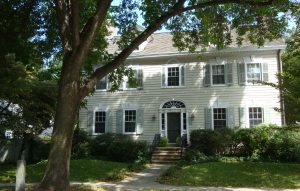 Originally located on Nassau Street opposite Bainbridge House, Beatty House (located at 19 Vandeventer) was the home of the Hudibras Tavern proprietor, Jacob Hyer, who is thought to have built the house c.1780. In 1816 the house was purchased by Colonel Erkuries Beatty. The Marquis de Lafayette is known to have spent the night of July 15 in the house on his tour of the United States in 1825. After Beatty’s death in 1823, the building housed Miss Hanna’s Boarding School for young women. James Vandeventer, merchant, and longtime Princeton resident, purchased the house and moved it to its present location in 1875.
Originally located on Nassau Street opposite Bainbridge House, Beatty House (located at 19 Vandeventer) was the home of the Hudibras Tavern proprietor, Jacob Hyer, who is thought to have built the house c.1780. In 1816 the house was purchased by Colonel Erkuries Beatty. The Marquis de Lafayette is known to have spent the night of July 15 in the house on his tour of the United States in 1825. After Beatty’s death in 1823, the building housed Miss Hanna’s Boarding School for young women. James Vandeventer, merchant, and longtime Princeton resident, purchased the house and moved it to its present location in 1875.
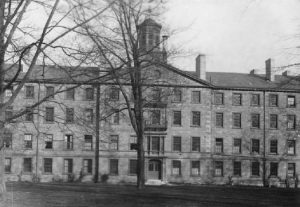 Alexander Hall (1817)
Alexander Hall (1817)
The Princeton Theological Seminary was started by the Presbyterian Church in 1812 with three students and the Reverend Dr. Archibald Alexander as its first professor. By 1815 the number of students had gradually increased and work began on a building for the seminary. Designed by John McComb, Jr., a New York architect, the structure was occupied in 1817. The original cupola was added in 1827; it burned in 1913 and was replaced in 1926. The building was simply called “Seminary” until 1893, when it was officially named Alexander Hall.
Drumthwacket (1835)
 Drumthwacket, official residence of the Governor of New Jersey at 354 Stockton Street, was built in 1835. The house was the private residence of three owners, Charles Smith Olden, Moses Taylor Pyne, and Abram Spanel, before being purchased by the State of New Jersey in 1966. Intended for use as the official residence of the Governor, it was not until 1981 that funds were raised by the New Jersey Historical Society to begin to accomplish the task.
Drumthwacket, official residence of the Governor of New Jersey at 354 Stockton Street, was built in 1835. The house was the private residence of three owners, Charles Smith Olden, Moses Taylor Pyne, and Abram Spanel, before being purchased by the State of New Jersey in 1966. Intended for use as the official residence of the Governor, it was not until 1981 that funds were raised by the New Jersey Historical Society to begin to accomplish the task.
Nassau Presbyterian Church (1836)
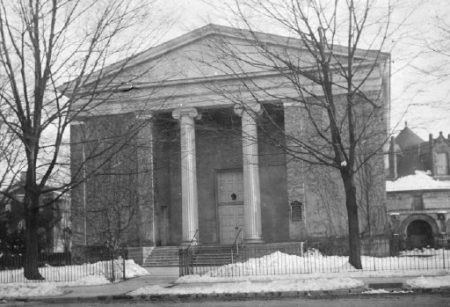 In 1751 Princeton residents petitioned the New Brunswick Presbytery to build their own meeting house, and the original structure was completed in 1764. The church burned down twice, once in 1813, and again in 1835. The structure at 61 Nassau Street in its present Greek Revival style was dedicated the following year. Charles Steadman designed the church using a facade plan purchased for $10.00 from Philadelphia architect Thomas U. Walter. David Peterkin, a local tombstone carver, executed the carving for the capitals and bases of the front columns. In the 1840s ninety members, mostly African-American, established a new congregation at the Witherspoon Street Presbyterian Church.
In 1751 Princeton residents petitioned the New Brunswick Presbytery to build their own meeting house, and the original structure was completed in 1764. The church burned down twice, once in 1813, and again in 1835. The structure at 61 Nassau Street in its present Greek Revival style was dedicated the following year. Charles Steadman designed the church using a facade plan purchased for $10.00 from Philadelphia architect Thomas U. Walter. David Peterkin, a local tombstone carver, executed the carving for the capitals and bases of the front columns. In the 1840s ninety members, mostly African-American, established a new congregation at the Witherspoon Street Presbyterian Church.
Alexander Street (1834)
 First named Canal Street, the street linked Princeton with the Delaware and Raritan Canal, which along with the railroad stimulated growth throughout the town in the 1830s. Charles Steadman, a local architect/carpenter, subdivided the land in the 1830s and 1840s and constructed houses, decorating the doorways and cornices using motifs from published pattern books. At the height of its activity Canal Street was a lively commercial center that included two basins where barges could load and unload, a railroad station, haypress, iron roofing manufacturer, sash and blind factory, and a hotel. The poet T. S. Eliot stayed at 14 Alexander Street in the fall of 1948, while he was a visiting fellow at the Institute for Advanced Study.
First named Canal Street, the street linked Princeton with the Delaware and Raritan Canal, which along with the railroad stimulated growth throughout the town in the 1830s. Charles Steadman, a local architect/carpenter, subdivided the land in the 1830s and 1840s and constructed houses, decorating the doorways and cornices using motifs from published pattern books. At the height of its activity Canal Street was a lively commercial center that included two basins where barges could load and unload, a railroad station, haypress, iron roofing manufacturer, sash and blind factory, and a hotel. The poet T. S. Eliot stayed at 14 Alexander Street in the fall of 1948, while he was a visiting fellow at the Institute for Advanced Study.
 Joseph Henry House (1838)
Joseph Henry House (1838)
In 1832 Joseph Henry came to Princeton University as a professor of natural philosophy. Henry, best known for his discovery of the electromagnetic phenomenon of self-inductance, built a large magnet at Princeton, which could lift 3,500 pounds. Henry’s research depended upon the support of a free black laboratory assistant named Sam Parker. In 1846 he left Princeton to become the first secretary and director of the new Smithsonian Institution in Washington, D.C. The house, probably designed by Joseph Henry, was built in 1838 and was moved three times before being set in its present location. House moving has been a common occurrence in Princeton since the 18th century and at least 100 houses in the town have been moved.
Witherspoon Street Presbyterian Church (1840s)
 The Witherspoon Street Church at number 124 is known for the role it has played in working towards social justice. Dating back to 1840, church leaders and members spoke out against slavery, assisted with the Underground Railroad, and later were active in the Civil Rights Movement. The church’s Rev. Benjamin Anderson led the effort to build Princeton’s first integrated housing development in the 1950s. Anderson also helped area restaurant and hotel workers to unionize.
The Witherspoon Street Church at number 124 is known for the role it has played in working towards social justice. Dating back to 1840, church leaders and members spoke out against slavery, assisted with the Underground Railroad, and later were active in the Civil Rights Movement. The church’s Rev. Benjamin Anderson led the effort to build Princeton’s first integrated housing development in the 1950s. Anderson also helped area restaurant and hotel workers to unionize.
Einstein House (c.1840)
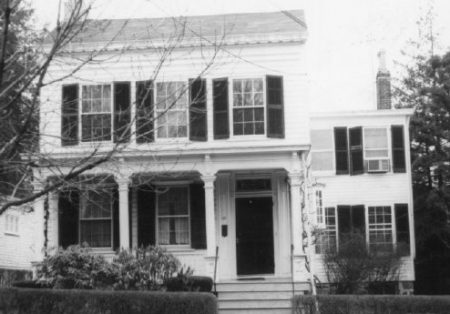 Albert Einstein lived at 112 Mercer Street from 1936 until his death in 1955. His theory of relativity made him a world-wide celebrity and in 1921 he received an honorary degree from Princeton University. In 1930 he agreed to spend part of each year at the newly founded Institute for Advanced Study in Princeton, an academic center where scholars could pursue their research free from the pressures of teaching. When the Nazis came to power, Einstein was forced to resign his position at the Academy of Sciences in Berlin and chose to settle in Princeton permanently. He assisted over 200 European scholars, scientists, and artists who appealed to him for help in emigrating. His house, originally located on Alexander Street, was moved to its present location c.1875. Today it is a private residence.
Albert Einstein lived at 112 Mercer Street from 1936 until his death in 1955. His theory of relativity made him a world-wide celebrity and in 1921 he received an honorary degree from Princeton University. In 1930 he agreed to spend part of each year at the newly founded Institute for Advanced Study in Princeton, an academic center where scholars could pursue their research free from the pressures of teaching. When the Nazis came to power, Einstein was forced to resign his position at the Academy of Sciences in Berlin and chose to settle in Princeton permanently. He assisted over 200 European scholars, scientists, and artists who appealed to him for help in emigrating. His house, originally located on Alexander Street, was moved to its present location c.1875. Today it is a private residence.
Prospect House and Garden (1851)
 Originally a model farm, Prospect was purchased in 1824 by John Potter, a wealthy merchant from South Carolina. His son Thomas F. Potter demolished the original Georgian farmhouse and replaced it with the present Italianate villa designed by John Notman in 1851. In 1878 it was presented to Princeton University for use as a residence for the president. Woodrow Wilson occupied the house when he was president of the University between 1902 and 1910. The form of the flower garden was designed by Ellen Axson Wilson, and the landscape displays a great variety of trees and shrubs, including many exotic specimens from around the world. Since 1968 the house has been used as a faculty club.
Originally a model farm, Prospect was purchased in 1824 by John Potter, a wealthy merchant from South Carolina. His son Thomas F. Potter demolished the original Georgian farmhouse and replaced it with the present Italianate villa designed by John Notman in 1851. In 1878 it was presented to Princeton University for use as a residence for the president. Woodrow Wilson occupied the house when he was president of the University between 1902 and 1910. The form of the flower garden was designed by Ellen Axson Wilson, and the landscape displays a great variety of trees and shrubs, including many exotic specimens from around the world. Since 1968 the house has been used as a faculty club.
Woodrow Wilson Houses
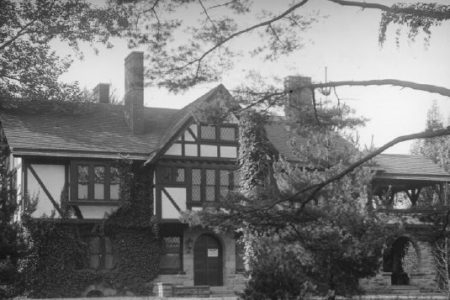 In addition to Prospect, Woodrow Wilson occupied three houses during his time in Princeton: 72 Library Place, 82 Library Place, and 25 Cleveland Lane. Graduating from Princeton in 1879, Wilson served as professor of law from 1890 to 1902, and as president of Princeton University from 1902 to 1910, during which time he revolutionized the school’s curriculum and teaching system. He was Governor of New Jersey between 1910 and 1912 and President of the United States between 1913 and 1921. The house at 72 Library Place was built in 1836 by Charles Steadman, and acquired by Woodrow Wilson in 1889. Wilson commissioned New York architect Edward S. Child in 1895 to design the Tudor Revival house at 82 Library Place.
In addition to Prospect, Woodrow Wilson occupied three houses during his time in Princeton: 72 Library Place, 82 Library Place, and 25 Cleveland Lane. Graduating from Princeton in 1879, Wilson served as professor of law from 1890 to 1902, and as president of Princeton University from 1902 to 1910, during which time he revolutionized the school’s curriculum and teaching system. He was Governor of New Jersey between 1910 and 1912 and President of the United States between 1913 and 1921. The house at 72 Library Place was built in 1836 by Charles Steadman, and acquired by Woodrow Wilson in 1889. Wilson commissioned New York architect Edward S. Child in 1895 to design the Tudor Revival house at 82 Library Place.
Grover Cleveland House (1854)
 Grover Cleveland and his wife settled in Princeton after his second presidential term ended in 1897. The Clevelands purchased a Georgian Revival house on Hodge Road, which they called Westland after Andrew Fleming West, first dean of the Graduate College. In turn, the main tower of the Graduate College was named after Cleveland. The Cleveland home became a gathering place for undergraduates, especially after athletic or debating triumphs, and the students paraded there every March 18 to celebrate Grover Cleveland’s birthday. Cleveland died in 1908 and is buried in Princeton Cemetery.
Grover Cleveland and his wife settled in Princeton after his second presidential term ended in 1897. The Clevelands purchased a Georgian Revival house on Hodge Road, which they called Westland after Andrew Fleming West, first dean of the Graduate College. In turn, the main tower of the Graduate College was named after Cleveland. The Cleveland home became a gathering place for undergraduates, especially after athletic or debating triumphs, and the students paraded there every March 18 to celebrate Grover Cleveland’s birthday. Cleveland died in 1908 and is buried in Princeton Cemetery.
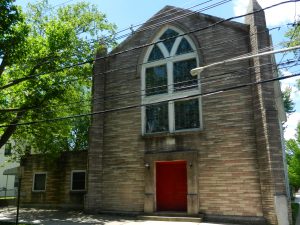 Mt. Pisgah AME Church (1860)
Mt. Pisgah AME Church (1860)
Named after a mountain ridge in ancient Palestine mentioned in the Old Testament, this 1832 Methodist Church (the present structure dates to 1860) at the corner of Witherspoon and MacClean Streets, is the oldest African-American church in Princeton. Organized by Samson Peters, a preacher in the Trenton AME Church, the congregation met in a frame house on Witherspoon Street until 1835 when the first church building was constructed. A tiny cemetery in the yard has tombstones dating back to the 1850s.
Paul Robeson’s Birthplace (c. 1870)
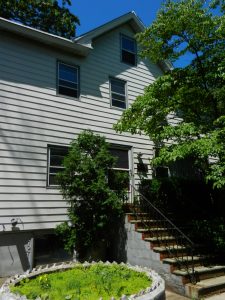 Born in this house in 1898 at 110 Witherspoon Street, Paul Robeson became one of Princeton’s best known residents. Son of a former slave, the Reverend William Robeson of the Witherspoon Street Church, Robeson achieved fame as an athlete, a singer and actor, a scholar, a law school graduate and a political activist, for which he was persecuted during the McCarthy era. He eventually quit his film career because he was dissatisfied with the types of roles that were available for black performers. He lived abroad in voluntary exile for five years, returning to the United States in 1962.
Born in this house in 1898 at 110 Witherspoon Street, Paul Robeson became one of Princeton’s best known residents. Son of a former slave, the Reverend William Robeson of the Witherspoon Street Church, Robeson achieved fame as an athlete, a singer and actor, a scholar, a law school graduate and a political activist, for which he was persecuted during the McCarthy era. He eventually quit his film career because he was dissatisfied with the types of roles that were available for black performers. He lived abroad in voluntary exile for five years, returning to the United States in 1962.
Battle Monument (1922)
 This limestone monument was designed by the prominent Beaux Arts sculptor Frederick MacMonnies with the help of architect Thomas Hastings. Commissioned in 1908, it was finished and dedicated in 1922, with President Harding in attendance. On the sides of the monument are the seals of the United States and the original thirteen states, including New Jersey. The creation of the monument served to commemorate the Battle of Princeton, which took place on January 3, 1777. The sculpture depicts Washington leading his troops into battle, as well as the death of General Hugh Mercer. (Princeton Battlefield Park is located on Mercer Street, 1.25 miles west of the center of town.)
This limestone monument was designed by the prominent Beaux Arts sculptor Frederick MacMonnies with the help of architect Thomas Hastings. Commissioned in 1908, it was finished and dedicated in 1922, with President Harding in attendance. On the sides of the monument are the seals of the United States and the original thirteen states, including New Jersey. The creation of the monument served to commemorate the Battle of Princeton, which took place on January 3, 1777. The sculpture depicts Washington leading his troops into battle, as well as the death of General Hugh Mercer. (Princeton Battlefield Park is located on Mercer Street, 1.25 miles west of the center of town.)
University Chapel (1928)
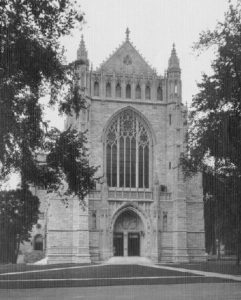 Designed by the renowned Gothic Revival architect Ralph Adams Cram, the cornerstone of the chapel was laid in 1925 and the chapel dedicated in 1928. This cross-shaped gothic chapel is 249 feet long, 61 feet wide, and seats 1800 people. Italian stonemasons hired from Milan, working for the Matthews Construction Company, used Pennsylvania sandstone trimmed with Indiana limestone to create the building. The woodwork was carved from pollard oak imported from England. Cram was supervising architect of the University from 1907 to 1930 and designed many Princeton buildings including the Graduate College.
Designed by the renowned Gothic Revival architect Ralph Adams Cram, the cornerstone of the chapel was laid in 1925 and the chapel dedicated in 1928. This cross-shaped gothic chapel is 249 feet long, 61 feet wide, and seats 1800 people. Italian stonemasons hired from Milan, working for the Matthews Construction Company, used Pennsylvania sandstone trimmed with Indiana limestone to create the building. The woodwork was carved from pollard oak imported from England. Cram was supervising architect of the University from 1907 to 1930 and designed many Princeton buildings including the Graduate College.
Click here for information about upcoming guided tours of the Chapel.
An online audio tour can be found here.
 Palmer Square (1936-39)
Palmer Square (1936-39)
The Palmer Square development was the dream of Edgar Palmer, heir to the New Jersey Zinc Company fortune. Palmer’s plan, which he announced in February of 1929, called for the creation of a new municipal center in the heart of Princeton. The design, prepared by architect Thomas Stapleton, was part of the Colonial Revival movement taking place in America at that time. The project, delayed until 1936 due to the Depression, included the removal of many of the homes of Princeton’s poor and minority families. It remained incomplete until the 1980s, when stores and townhouses were added on the north and east sides of the square.
